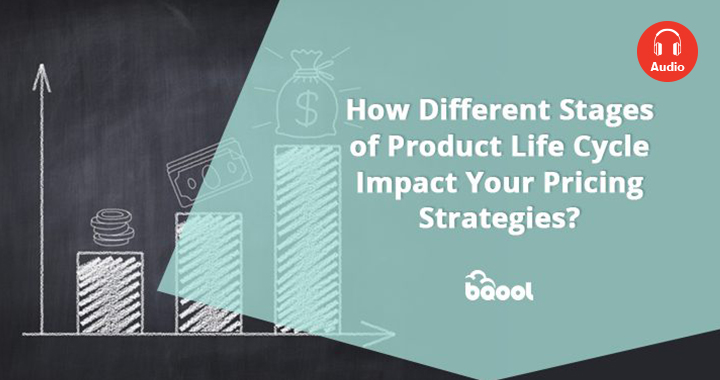How Product Life Cycle Impact Your Amazon Pricing Strategies?

Would you rather listen to this blog instead of reading it? Just click play below. (Audio Recording by Marco Negri)
As an Amazon seller, you are probably performing product research to discover new and trending products to attract shoppers. Getting the right price for your products is a key aspect of your business. When a new product enters the market, its product life cycle begins. From the beginning to the end, each stage of the product life cycle will require a different pricing strategy to maximize product profitability.
Before you make your purchasing decision, let’s dig into the nitty-gritty of the product life cycle, so you will have a better idea of how to find products that are growing in popularity to help you generate more revenues.
Understanding the 4 Stages of Product Lifecycle
-
Introduction Stage
When a new product is introduced to the market, it is unknown to most buyers. Even though there is no review or rating, the product faces hardly any competition. In order to quickly create a demand for a new product, sellers can set the price lower than competitors, or offer a reduced introductory price for a limited time to attract customers and generate some word of mouth. However, pricing your products too low will not only hurt profits, but also it will lead buyers to undervalue your products, or even suspect that you are selling counterfeit goods.
-
Growth Stage
As the number of your product reviews increases steadily, the sales volume of your new product is also on the rise. Sellers can increase the selling price gradually due to growing market demand. On the other hand, your potential competitors are also aware of your product and have started selling it. So you create added value to your products, such as providing should good customer service to achieve a higher customer retention rate at this stage.
-
Maturity Stage
In the maturity stage, growth slows down and eventually stabilizes. Price wars and sales promotion become common due to intense competition. Sellers should know how to differentiate themselves and emphasize their unique selling points to eliminate competition for increasing or maintaining market shares.
-
Decline Stage
It happens to any kind of product. After the product has been in the market for a while, it slowly enters a recession. When shoppers start showing little interest in a product, the sales will start declining. Sellers will usually devise some promotions such as a discount, free shopping, or bundle sales to keep products in the decline stage as attractive as possible. Sellers may also choose the option of getting rid of products showing a decline in popularity to prevent slow-moving inventory issues.

How to Create the Best Pricing Strategy to Handle the Amazon Product Life Cycle?
Pricing is a crucial factor influencing the product life cycle, and each stage requires a different pricing strategy to maximize earnings. With an Amazon repricer, you can keep your prices competitive.
In the first stage, sellers can create their own repricing rule to get the Buy Box first with a repricer and bring as many sales to their store as possible. When it moves to the Growth stage, sellers can set a minimum and maximum price for a listing to prevent its price from falling below your break-even price. As reviews and ratings increase, sellers can customize their repricing rules by choosing which type of merchants to compete with through the final two stages in the product life cycle.
To effortlessly implement these pricing strategies in the product life cycle, you’ll need BQool’s Repricing Central to adjust your price instantly and accurately.
This blog post was originally published in January 2019 and was updated in August 2022 due to product updates or Amazon policy changes.








